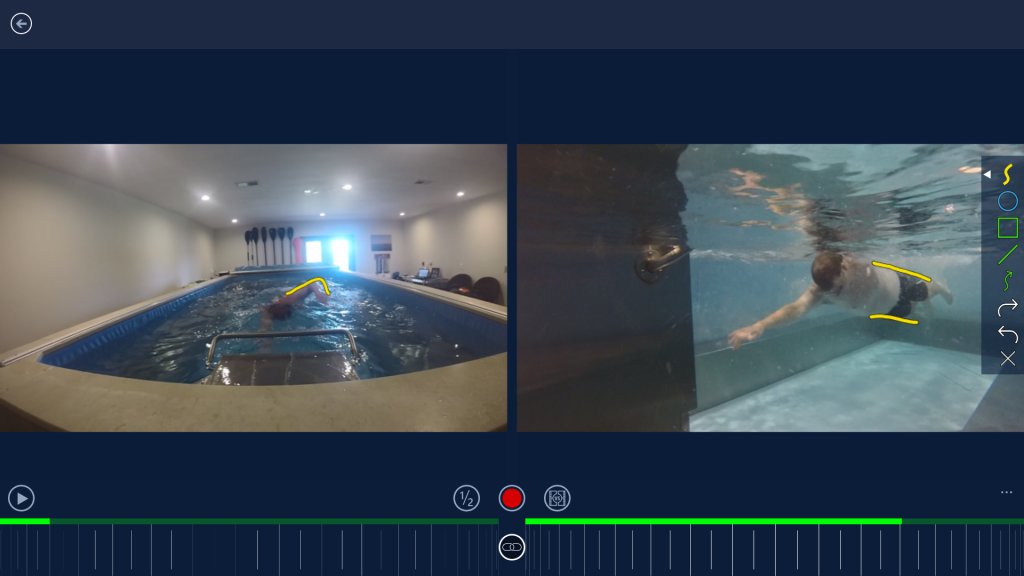Fall into Fast
Adam was in the studio this week for a tune up lesson. As usual the first order of business is to take video and have a look at his swim. We also discussed his current thoughts about his swimming, any plateau points and discoveries that he has had since we last met. He had raced in a sprint tri a few days prior and was not able to find a comparable open water pace to what he can swim in the pool.
During his time at the studio we identified three main areas for him to generate some speed. One focal point in particular had the potential to contribute to speed gains in a few different ways. Here is a look at a screenshot of what we saw.

The impact of the left arm recovery movement on the body’s drag profile
The recovery phase (the time where the arm is in the air) had the potential to save Adam energy and to give him speed and ease. After we talked about optimizing the shape, direction and tempo of the recovery arm, his profile looked like this.

Corrected left arm recovery produces a hydrodynamic body profile
The recovery arm, being very heavy and unsupported by the water, has the potential to help or hinder the body. In the first image above, the left arm is flat, with the elbow dropped backwards and the hand inching forward. Sending the weight of the arm tilted back in this way can make the hips and legs sink. This is visible in the underwater view. The flattened out shape of the recovery arm also requires greater muscular energy to shift it forward, and also produces less of a mass change to aid in propulsion.
When we made the shift towards a wider swinging elbow that had height and mobility, there was instant speed. Greater mass change, increased hydrodynamic body profile underwater and less energy usage allowed Adam to swim with speed and ease. The changes are shown in the image above. He felt like he was ‘falling forward’. And when watching his video at the end of the lesson he said ‘is that really me?’! Looking stealthy, fast and effortless, way to go Adam!

